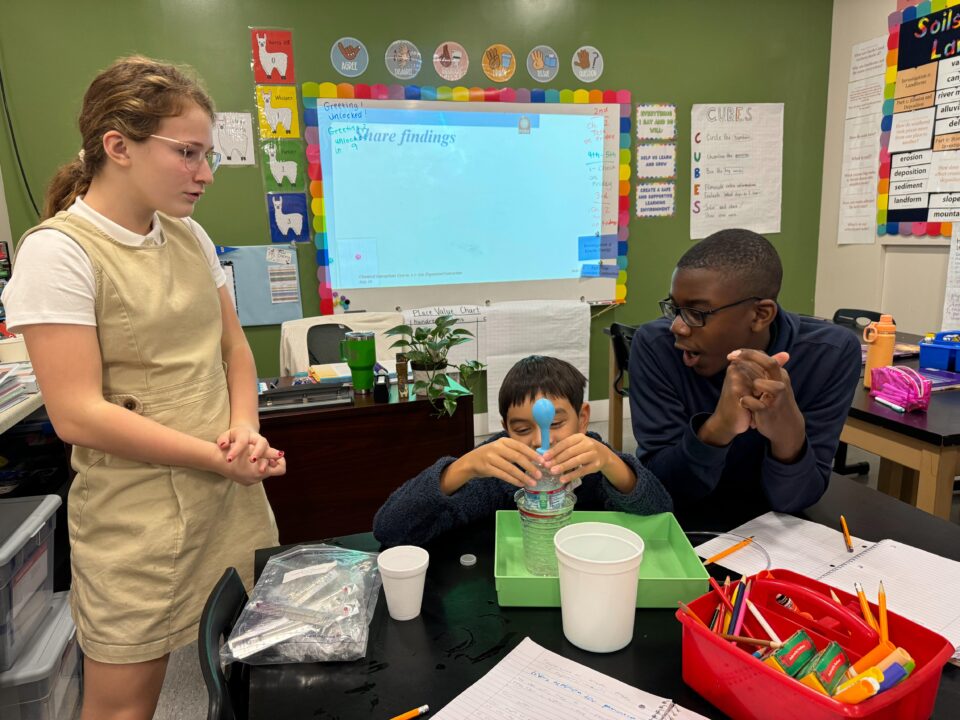
Dr. Tom Lickona speaks about raising kind kids
November 4, 2020
Bilingual Spanish-English Newspaper “Verde, Amarillo, Blanco” by HWIS Students
November 6, 2020In a Harvard Business Review article entitled “Americans Need to Get Over Their Fear of Math”, the author describes a study in which nearly half of 1st or 2nd graders in the U.S. claim to be “moderately to very nervous” about math. Called “math anxiety”, the fear of math at a young age has a compounding impact on reducing math capability in the child - both neurologically and psychologically. Brain scans and neuro-cognitive research show that stress reduces working memory and the ability to persevere. It can also lead to a self-defeating talk that can impact the student’s math achievement in higher grades. At a time when math related jobs are expected to grow nearly 30% in the next decade, addressing this problem is of critical importance for our nation’s youth.
Here are 10 ways I have found to improve students’ attitudes in the math classroom.
At HWIS, students develop strong competency in math by developing a solid foundation in number sense in preschool. All teachers including preschool teachers are trained in the use of Singapore Math which develops skills starting from the concrete, to pictorial, to abstract. Small class sizes and high expectations ensure student can progress to their potential.
Raelen Donahue has been teaching English Language Arts, Math, Science and Social Studies to Elementary and Middle School students at HudsonWay since 2016. Raelen graduated Cum Laude from Kean University with a BA in Elementary Education and a minor in Mathematical Sciences. At Kean, she authored a research paper on the prevention of bullying. Raelen enjoys music, art, reading and making memories with her family.
Here are 10 ways I have found to improve students’ attitudes in the math classroom.
- Develop a growth mindset in students- help students understand that their ability in math is not “fixed” and that they are not either “good” or “bad” at math, but that their ability is “growth” oriented. Anyone can be “good” at math with the right attitude, patience and persistence. Students can create a list of affirmations to reassure and motivate themselves. Teachers can also help in this regard by replacing use of words such as “hard” with “challenging”.
- Promote enjoyment of the challenge – when teachers solve problems in class, they can model positive self-talk, approaching a challenging problem in different ways, persisting after not getting the right answer immediately, and celebrating the process as well as the outcome. This models persistence, and patience in problem solving.
- Overcome stereotypes – since society gives girls messages that girls are not as good at math as boys, it is important to overcompensate for this with setting high expectations coupled with encouragement for girls.
- Educate parents to keep negative attitudes about math to themselves – sometimes parents try to help their children with math homework and do not realize that their own anxiety or negative attitudes about math can have a detrimental effect. Saying “I wasn’t very good at math”, or “that problem is hard” can reinforce the anxiety in the child.
- Create a classroom environment that encourages questions - asking questions is important to learning any subject, but especially in mathematics since future success depends on having a very solid foundation. Being able to identify where one is having difficulty and then addressing it by asking a question instills growth and confidence. Solving open-ended problems such as “How many different ways of grouping 12 items are there?” encourages students to think of multiple ways of solving a given problem.
- Group students to solve problems together - having students work together can not only make the solving of problems more fun, it can benefit students at both ends of the spectrum. Those who are just learning the concept can benefit from the more advanced student, and the more advanced student can reinforce his knowledge by explaining it to the other student and sometimes uncover yet another way of solving the problem.
- Develop real life applications of the problem – developing situations that relate to real life applications can help students see the usefulness of these skills thus improving motivation. It can help with creation of goals if one sees a career as an astronaut, for example, attainable through the study of math.
- Practice estimating – developing an estimate derived from logic and not based on getting the exact right answer is helpful in reducing anxiety and building resilience. It helps to build logic and reasoning skills versus focusing on computation.
- De-emphasize speed - some of the anxiety regarding math can be traced to having to complete the problems in a certain timeframe. Understanding of the concept, and accuracy are more important to building foundation.
- Build confidence - it is important to challenge the student by giving problems that are in the zone of proximal development or as we sometimes say, I + 1 in which you give just one level above what the understanding is, not two levels up, or a level down. As the student learns the material, her confidence will continue to build.
At HWIS, students develop strong competency in math by developing a solid foundation in number sense in preschool. All teachers including preschool teachers are trained in the use of Singapore Math which develops skills starting from the concrete, to pictorial, to abstract. Small class sizes and high expectations ensure student can progress to their potential.
Raelen Donahue has been teaching English Language Arts, Math, Science and Social Studies to Elementary and Middle School students at HudsonWay since 2016. Raelen graduated Cum Laude from Kean University with a BA in Elementary Education and a minor in Mathematical Sciences. At Kean, she authored a research paper on the prevention of bullying. Raelen enjoys music, art, reading and making memories with her family.





